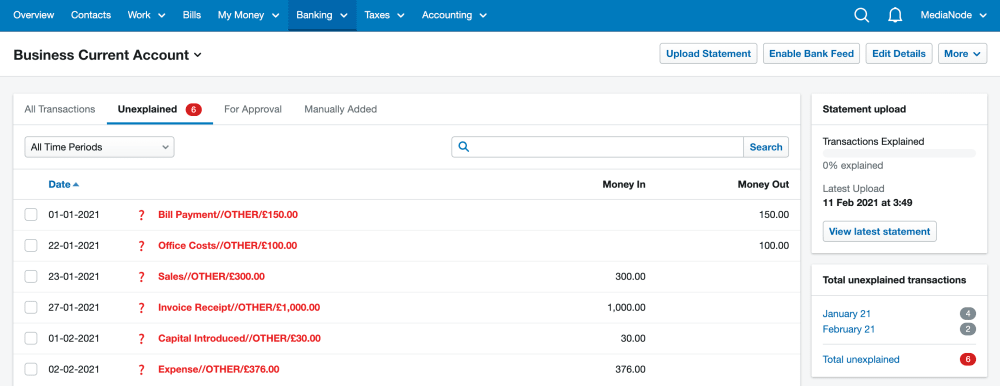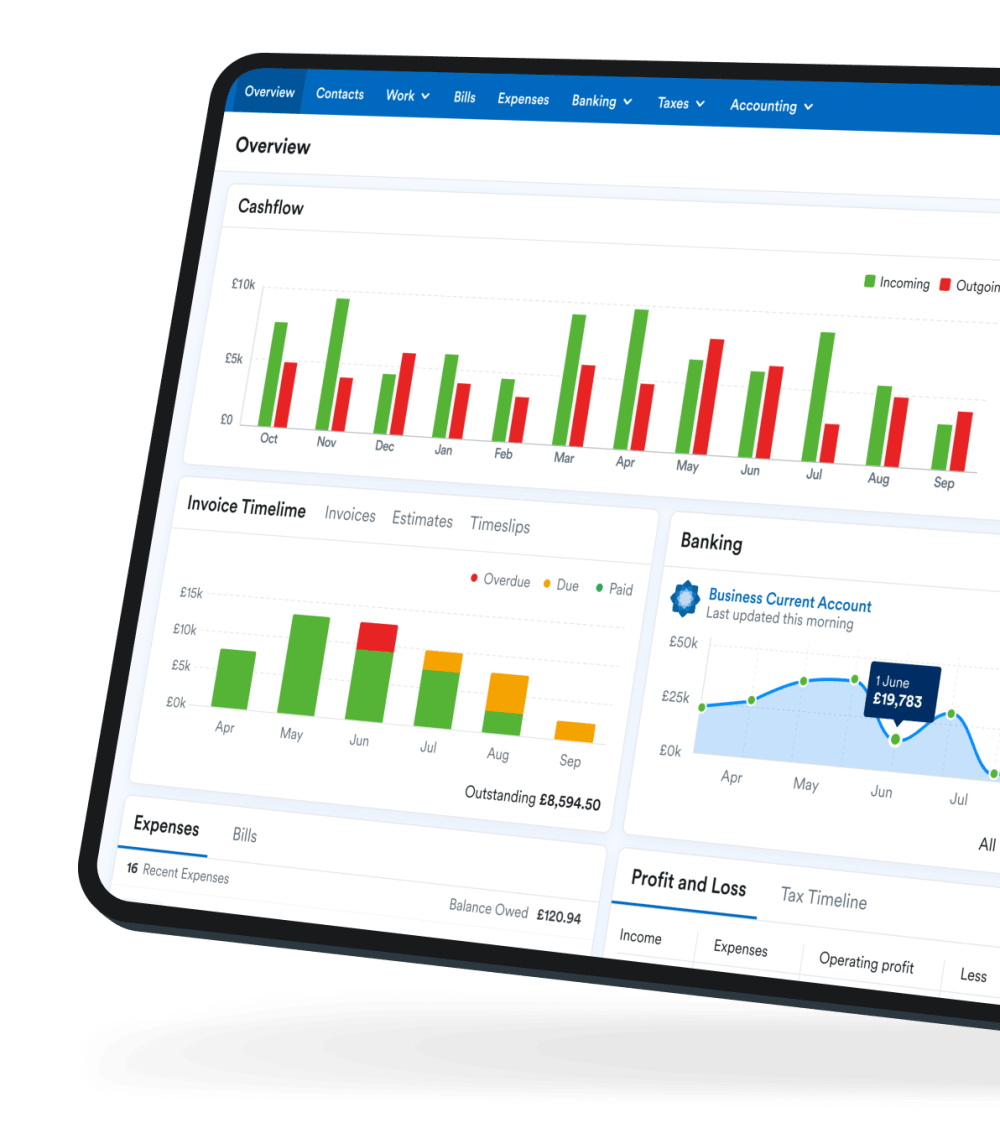A beginner’s guide to bank reconciliation

Bank reconciliation is an essential process for your small business. Get it right, and you’re well on your way to being on top of your finances. Get it wrong, and you could end up paying more tax than you should!
But what is bank reconciliation and what essential information do small business owners need to know in order to reconcile your transactions? This guide aims to answer these questions and provides some practical advice to help you ensure your business books are accurate and up to date!
What is bank reconciliation?
Bank reconciliation is the process of ensuring that the information in your business’s accounting records matches the information in your bank account. This includes the opening balance, the closing balance, and the individual bank transactions.
Imagine you buy a train ticket for a business trip on your company debit card. When you see this transaction appear on your bank statement, you will need to record it in your accounting records. If you don’t do so, your records will show a different figure to your bank account. This process of recording and matching transactions from your accounting records to your banking records is bank reconciliation.
Bank reconciliation helps you keep on top of other financial aspects of your banking, letting you check what money has come in, what money has gone out and identify any suspicious activity.
Why is bank reconciliation important?
Getting bank reconciliation wrong can leave you with an inaccurate view of how much money you have in the bank, which could have painful consequences for your small business. One common mistake is not setting the opening balance of your business accounts to that of your bank account before you start recording transactions in your accounting records.
If you manually retype transactions between your bank statement and a spreadsheet or paper ledger, you may miss transactions. If you fail to log a transaction, you may look like you’re under-reporting your sales. HMRC might see this as a sign that you’re trying to pay less tax than you should, which could trigger an inspection from the taxman.
If you add extra transactions or accidentally double-count transactions like sales, you’ll be liable to pay more tax than you should. It can be costly and time-consuming to rectify these types of mistakes.
A helping hand from modern technology
When it comes to the process of reconciling bank transactions, spreadsheets are an option but cloud accounting software offers far greater functionality and is less prone to errors.
Accounting software systems take a lot of the work out of retrieving information from your bank statements, which you upload using CSV files or pull through automatically with the help of a bank feed provider.
Five easy steps to reconcile your bank transactions
1. Get your bank statement: This can usually done by checking your online banking or the statement your business receives through the post.
2. Have your accounting system ready: Whether you manage your business through spreadsheets or software like FreeAgent, have your records open in front of you. It’s best practice to do bank reconciliation on a monthly basis, so have your system open at the month you wish to reconcile.
3. Make sure the opening balance in your accounting system matches the opening balance of your bank statement at the start of the month: If you don’t take into account the amount you have in your opening balance, then the balances at the end won’t match.
4. Systematically check each transaction on your bank statement: Regardless of whether you’re doing this process manually or through the help of a bank feed, remember to go back and double-check that you haven’t missed or double-counted any transactions. If you’re using accounting software, it may require you to explain your transactions - we’ll talk more on this later!
5. Check that your closing balance matches the balance on your bank statement: Once you’ve reconciled all your transactions and double checked them, the balance in your accounting system should match your bank statement. If it doesn’t, then head back to step 3.
With your bank balance now matching the balance on your business books, you’ve successfully reconciled your bank transactions!
Explaining bank transactions
If you’re using cloud accounting software, you may be prompted to “explain” your transactions once they are reconciled. This helps classify the transaction, allowing the software to be able to organise the transaction in the appropriate section of your accounts. For the aforementioned example of buying a train ticket, explaining the transaction as a travel expense would allow your accounting software to attribute the ticket to the appropriate part of your accounts.
Once you’ve added your transactions into FreeAgent, they’re shown in red to indicate they require explanation.

By picking a transaction and selecting an appropriate category to explain what it is, the record’s colour will change from red to green.
For more information on explaining transactions, see our video:
Unlocking new efficiencies with Open Banking
Open Banking is an exciting new development in financial services technology that encourages banks to facilitate more data sharing between themselves and third party software providers. If you use a bank that supports Open Banking, this presents a huge opportunity for you to get far more value from your banking data - and an easier way to reconcile your bank transactions in cloud accounting software. You can find the full list of banks that support Open Banking here.
Disclaimer: The content included in this guide is based on our understanding of tax law at the time of publication. It may be subject to change and may not be applicable to your circumstances, so should not be relied upon. You are responsible for complying with tax law and should seek independent advice if you require further information about the content included in this guide. If you don't have an accountant, take a look at our directory to find a FreeAgent Practice Partner based in your local area.
